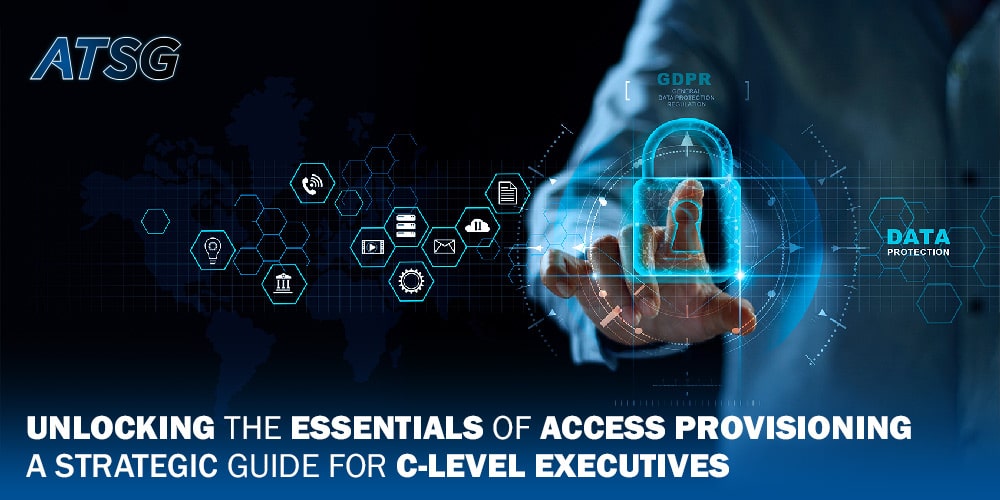The concept of access provisioning started as a convenient way to let people access the various digital tools and data they needed, to do their jobs efficiently. However, as the world changed and cyber threats proliferated, access provisioning evolved from convenience, to an absolute necessity for many businesses.
Many C-suite executives have now come to terms with the fact that access provisioning is no longer just an IT buzzword, given the in-valuable nature of digital assets. A lot of IT leaders have realized that it has become a strategic imperative, one that needs to be tackled systematically.

Understanding Access Provisioning
In the digital realm, businesses store valuable assets like source code and personal data in databases and servers. The rise of remote work and cloud computing has prompted companies to rethink access management. Access provisioning acts as the guardian, balancing robust security with user convenience. It’s not just about initial setup but also involves ongoing management to ensure both security and ease of access to digital assets.
The major activities that encompass access provisioning include:-
- Creating and managing user accounts
- Assigning passwords as per robust policies
- Updating passwords periodically
- Authorizing official email addresses
- Granting permissions to access various types of data
- Revoking these permissions when needed
- Ensuring appropriate levels of access, based on employee roles and responsibilities
Related Post: Understanding Why CISOs Need Zero Trust in Ransomware Defense
The Role of Access Provisioning in Cybersecurity
One of the pivotal elements, in the grand scheme of preserving the cybersecurity posture of an enterprise, is access provisioning. The scope of access provisioning goes beyond just the technical aspects. It is an integral part of establishing a resilient digital defense.
Here’s how C-suite executives can leverage access provisioning, and drastically improve their cyber defenses:-
1. Access provisioning determines who gains entry to digital assets, what they can access, and their subsequent actions. By controlling user access, enterprises establish a strong defense against external threats, and only allow authorized users inside. This mitigates the risk of un-authorized entry and potential data breaches.
2. Whether due to employee error or some malicious intent, insider threats can never be ruled out. Access provisioning ensures that employees have access to the digital resources of an enterprise, only to the extent of their job role; no more, no less. This way, the concept of least privilege limits the potential damage that even malicious insiders can inflict, by substantially reducing the overall attack surface, and limiting lateral movement.
3. In today’s toughening regulatory environment, including GDPR, HIPAA and CCPA, strict compliance is essential for enterprises. Access provisioning aligns data practices with the applicable rules and regulations. It also safeguards businesses against non-compliance penalties and reputational damage.
4. Access provisioning also equips C-suite executives with valuable insights on the cybersecurity posture of their IT environment. It highlights the different vulnerabilities, access patterns and areas for improvement, to help businesses in strategic decision-making.
Related: Mastering Enterprise Cybersecurity: Tackling Internal & External Threats
Operational Efficiency and Access Provisioning
Streamlined access provisioning also emerges as the key to achieving operational efficiency. But why is it so crucial, you may wonder? The answer lies in the very essence of access provisioning.
By ensuring that the right people have the right access at the right time, we effectively eliminate any un-necessary bottlenecks. This means our workforce is empowered, and can easily focus on their tasks, without any hinderance. As a result, we would improve productivity, and achieve our goals with greater ease.
Consider, for instance, a team that is engaged in a major project for your enterprise. At the last-minute, they discover some access related hurdles. This would not only stall their productivity, but also lower their morale. Streamlined user provisioning and user-friendly software prevent these setbacks.
Conclusion
Access provisioning strengthens cyber defenses and streamlines operations, achieving a balance between security, accessibility, and efficiency. ATSG offers top-tier managed IT services and customized cybersecurity strategies, along with valuable advisory services. Specializing in micro-segmentation, we isolate and protect key digital assets to enhance your cybersecurity posture. Choose ATSG for a secure and efficient digital future.




